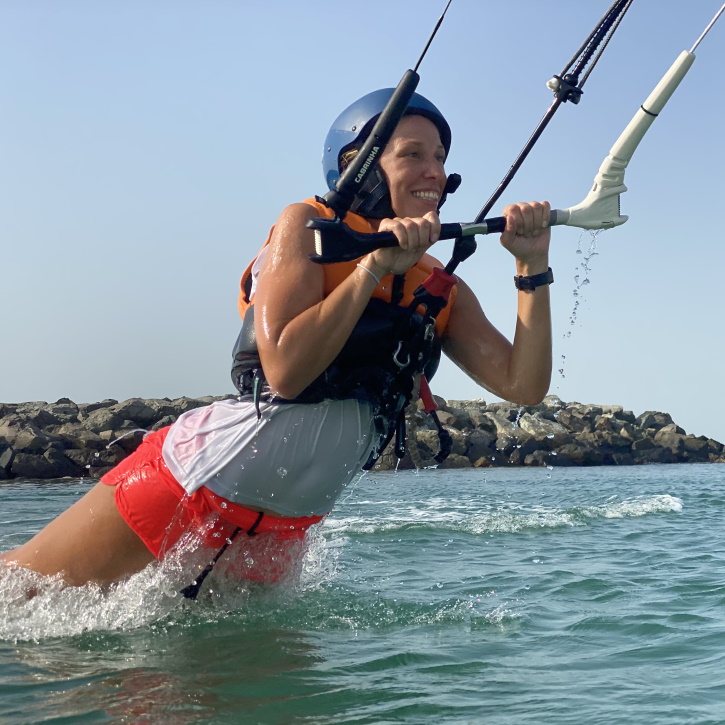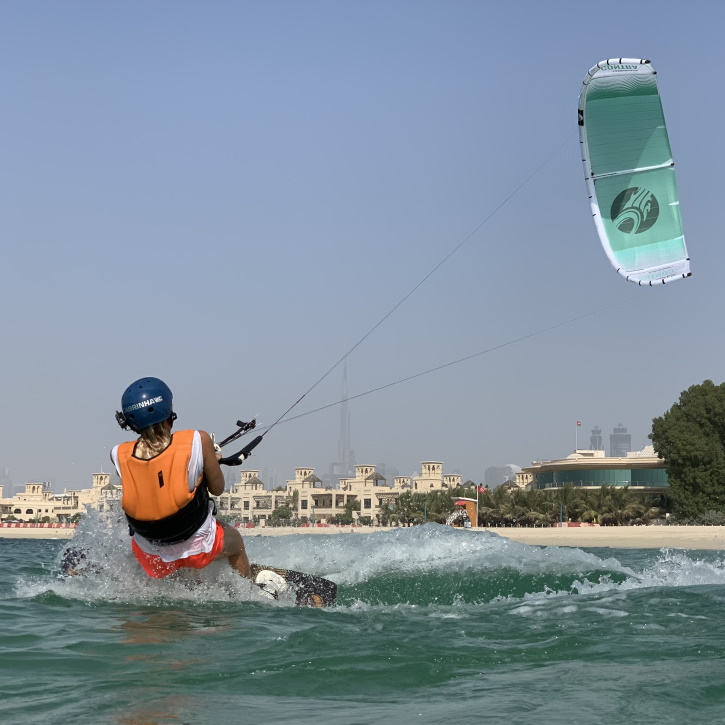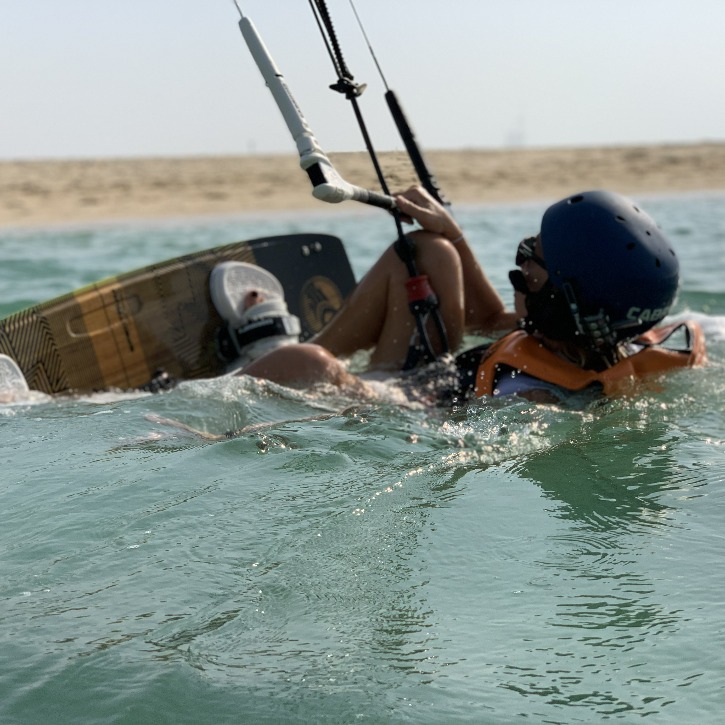Mastering the Art of Kitesurfing Water Starts: A Comprehensive Tutorial
Unveiling the Intricacies of the Water Start Technique
Embarking on the thrilling journey of kitesurfing in Dubai involves mastering the essential skill of the water start. This tutorial delves into the intricacies of executing a flawless water start, revealing the nuanced steps that go beyond mere observation.
Board Position and Kite Control
To initiate the water start, position the board downwind and bring the kite to approximately 12 o’clock. Dive the kite in the desired direction, and as the kite generates force, smoothly bring your weight forward onto the board. while getting on the board bring the kite backup by steering on the opposite side, ensuring a smooth transition. Straighten the front leg but don’t lock it and shift slightly more weight to the back foot for stability.
Breaking It Down: Two Parts to Water Start like a pro
Given the multi tasking nature of the water start, it’s advisable to break down the process into two parts. Dedicate time to mastering each part individually until the movement become second nature. During our kite surfing lessons in Dubai, our kite instructors dedicate a lot of time to master the kite control.
Skill 1: Mastering Kite Control for Starting and Stopping
The primary skill to master for the water start in kite surfing is precise control of the kite’s movements to start and conclude the water start. Dive the kite into the power zone, bring it back up to end the dive, and return to the 12 o’clock position. Gradually steer the bar out to reduce power during the dive, and smoothly bring the kite back up to avoid crashing. As you know kite control is not by steering on one side but even kite control is done while releasing the bar up (sheeting out) by maintaining tension on one of the side of the bar while releasing the bar. So far this is really one of the most important factors that might cause confusion to the kite surf students as many tend to release the bar after steering causing the loss of kite control.

Skill 2: Controlling Power Dive Severity
Avoid a common mistake in power dives—tensing your arms. Relax your grip, focusing on the kite’s start-and-stop movements. Control the power dive’s strength by adjusting the steering speed. A slower steer results in a shallower dive, while a quicker steer allows the kite to move deeper into the power zone and this causes less and more power based even on how much you pull the bar toward you after diving the kite.
Kite Control Common Mistakes
A prevalent mistake during power dives is tensing the arms excessively, this causes the engagement of the shoulders that causes a small range in the kite control. Beginners often grip too tightly, hindering steering and de-powering. Relax your grip, using only fingertips, and concentrate on executing smooth start-and-stop movements to minimize the risk of injuries and kite damage. For sure this exercises should be done inside the water and never on the beach as it can be very dangerous in case of any mistakes.
Perfecting Body Position: A Key to Successful Kitesurf Water Starts
Achieving the ideal body position is crucial for a successful water start. Begin with bent knees and a crunched stomach, bringing your weight close to the board. An important exercise to practice and really to practice a lot is to learn to position the kite and the board parallel to each other, one of the biggest struggles the loss of balance just before the water start because the kite and the board are not aligned. For example if the kite is at 12 o’clock then the board should be straight under the kite, after that try to move the kite to 1 o’clock while rotating your body to make sure the board is underneath the kite and not in the same position where your board was positioned when the kite was at 12 o’clock, if you don’t do that you will lose your balance, if you lose your balance you need to let go of the board straight away, if not you will end up dropping the kite too and losing the board!
When trying to get on the board after diving the kite and the kite pulls, roll your head and shoulders forward, effortlessly getting on the board. Avoid straightening your body during the kite’s dive, as you will end up flying froward into the superman dive!
Effortless Riding: Turning and Positioning for Efficiency
Once on the kite board, focus on turning smoothly to the right. Adjust the board’s position to reduce resistance by pointing the board nose towards the kite. As you’re get out from the water, straighten the front leg and keep the back leg bent. Distribute slightly more weight to the back leg to prevent nosediving.

Riding Further: Advanced Techniques for Extended Runs
Dive the kite for added power, in case the wind is light keep steering the kite up and down until you get enough power to keep going, in case the wind is strong you won’t need to move the kite much as the kite have enough power to pull you and you need to do is to maintain the kite at 45 degrees, and hold the kite in position. Adjust power by pulling in or pushing out the bar, speeding up or slowing down accordingly. If speed drops and sinking becomes a concern, quickly steer the kite to 12 and back down to 1:30 or 2 o’clock and point the board downwind too.
Conclusion: Your Path to Kitesurfing Success
hopefully those tips and tricks , will help you on your kitesurfing journey as water start in kite surfing is one of the most frustrating part of the whole sport. An important recommendation that we can make for you that during your kite surf lessons in Dubai please take your time to master every technique and don’t rush to get to the water start as the perfect kite control makes the water start process much easier. In case you are struggling with the water starts or you are having problems to progress you can reach out to our kite surf school in Dubai on +971558006363 or by email [email protected]


